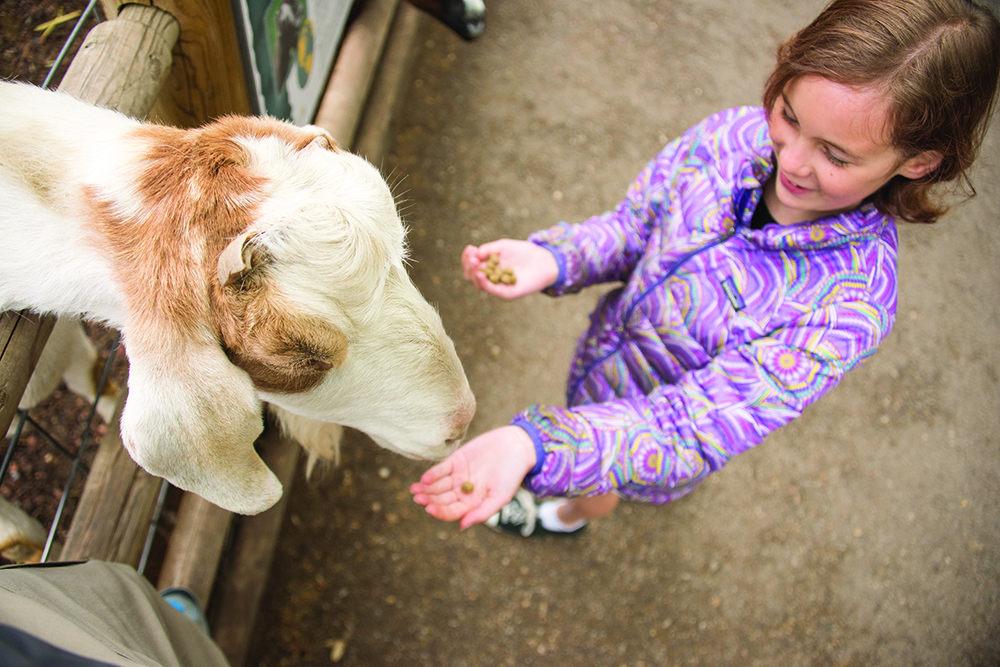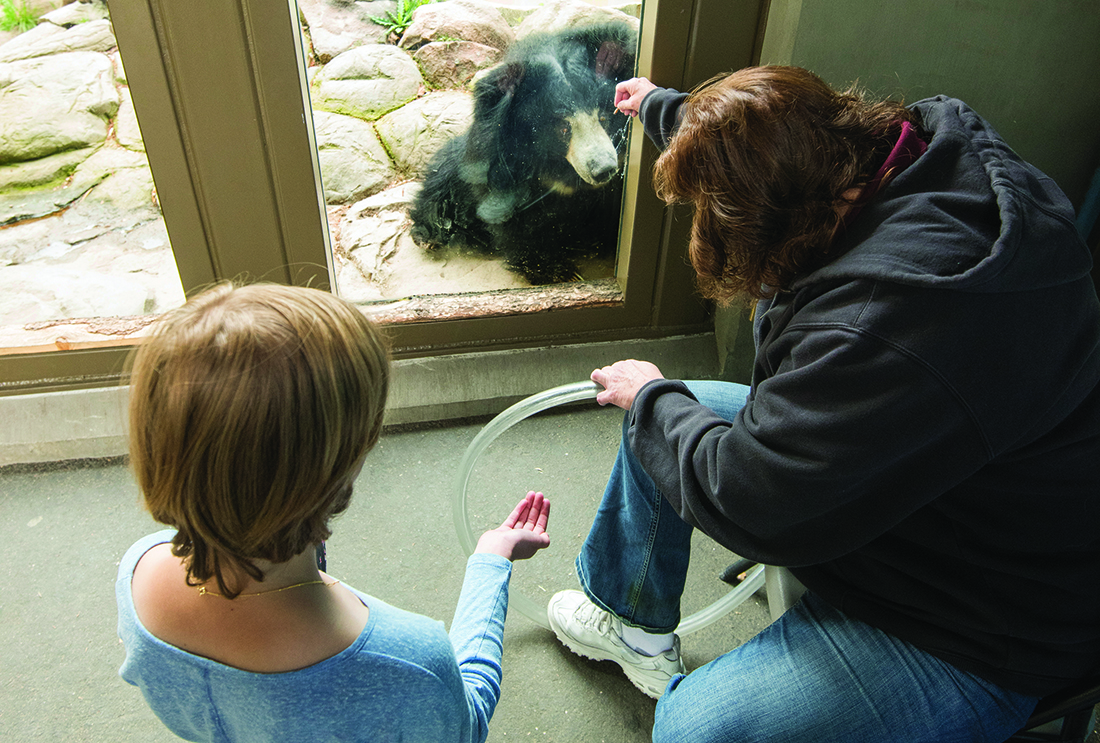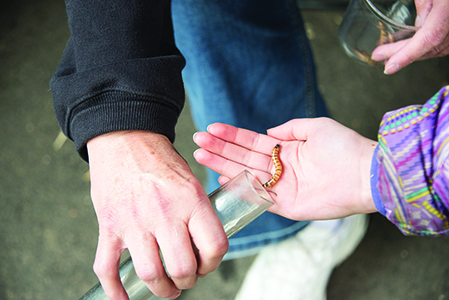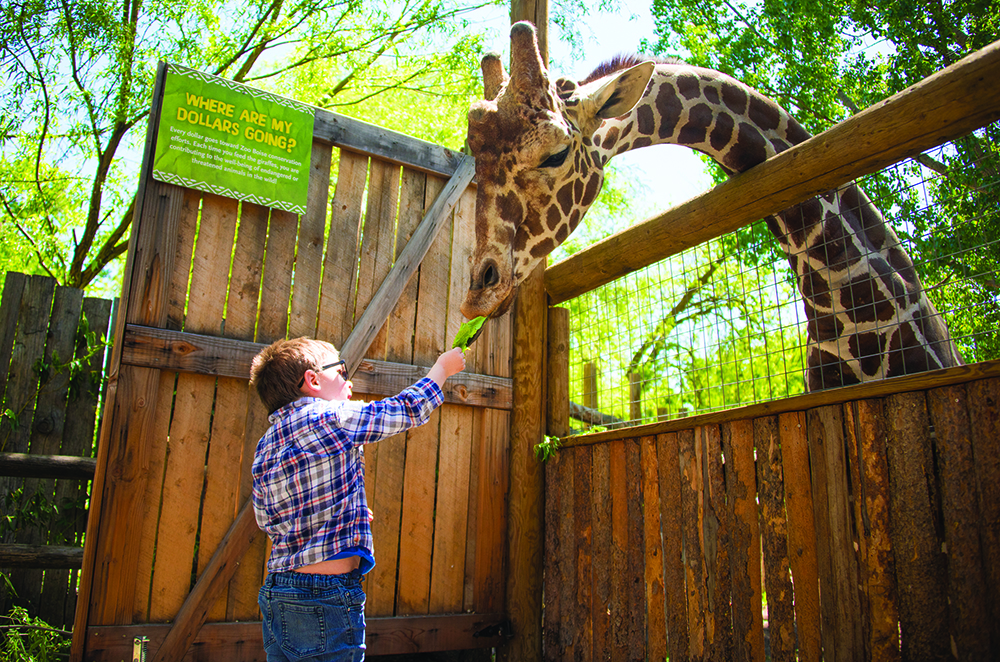At Zoo Boise, watching a sloth bear vacuum up mealworms from your hand helps educate law enforcement officers and lawyers in India and Nepal on processing poachers. Feeding Jabari the giraffe a lettuce leaf snack or Dean the llama a handful of treats is a step toward rebuilding populations of African wildlife. For $3 or even 50 cents, respectively, Zoo Boise visitors delight in up close encounters with some of the zoo’s favorite inhabitants. It’s a fun activity no doubt, but these animals are part of a bigger mission: making a single visit to Zoo Boise a conservation action.
Tucked away southwest of downtown Boise, a wildlife oasis nestled off Myrtle Street is cementing itself as a global conservation leader. An 11-acre facility now beginning its second century of operation—it opened 101 years ago as a menagerie to house exotic birds and an escaped circus chimp—the zoo has sizable plans to keep the momentum going.
In 2014, the World Wildlife Fund released a wrenching statistic: between 1970 and 2010, the populations of mammals, birds, reptiles, amphibians, and fish around the globe dropped 52 percent. The numbers had been falling for quite some time, so in 2007, Zoo Boise Executive Director Steve Burns approached the cause from the lens of annual visitors to the zoo, over 340,000 each year, to be exact.
“We took this inventory of ourselves and realized we have two things to bring to the table: we have animals people want to see, and we have a lot of people who want to come see them,” he said.
Burns and staff decided that, if the simple act of just walking through the doors became a conservation act, they could make an impact. Zoo Boise became the first zoo to require a 50-cent conservation fee as part of the entrance price—$5 for annual passes. In addition, it offers an array of animal encounters for a small fee (like feeding the sloth bear) that hike up their conservation contributions. Burns recognized that people do love animals and want to see them succeed as populations, but they don’t always know how to make an impact.
“People don’t want to see species go extinct, but what are they supposed to do?” he said. “Just by visiting with your family you are helping; our exhibits become vehicles to protect animals.”

The zoo’s feeding program, and associated fees, enable the organization to dedicate 10 percent of its operating budget to conservation efforts.
Zoo Boise is one of 2,800 wildlife exhibitors in the country, meaning a facility with a license from the U.S. Department of Agriculture. But only 10 percent of those are recognized as an Association of Zoos and Aquariums (AZA)-accredited facility. The AZA is a global nonprofit that independently accredits facilities based on the highest industry standards in conservation and management. When Burns refers to a zoo, he only means the facilities in this 10 percent.
“There is a growing need to justify why we have zoos and aquariums,” said Liz Littman, the assistant director of the zoo. “But there is a new role zoos can play in raising funds, as well as continuing research and spreading knowledge.”
Now, each year Zoo Boise gives just over 10 percent of its operating budget to conservation efforts (that’s between $200,000 and $300,000 every year and over $2 million during the past nine years). The business model has inspired 27 AZA-accredited zoos to do the same, including the Oregon and Oakland zoos, generating over $12.5 million to conservation efforts thanks to the small fee. Overall, the AZA-accredited zoos generate $188 million a year for conservation, but Burns wants that number to reach $500 million.
“That would make these institutes one of the biggest sources of conservation funding in the world, and we are creating a business model in order to do that,” he said. “We are pushing an envelope that needs to be pushed. The world needs zoos and aquariums right now.”
Zoo Boise has used these funds to provide grants to different causes, like the $24,000 given to the South Luangwa Conservation Society to fund anti-poaching patrols. Locally, Zoo Boise has helped to restore the habitats destroyed by Idaho’s Table Rock Fire. After getting feedback from the groups, the zoo shifted focus to giving more money to fewer causes.
“We heard feedback that if we want to be more effective, pick fewer projects and fund them in bigger amounts for longer terms,” Burns said. Now, the organization is doing just that.
Zoo Boise is working to contribute $2 million to help rebuild Gorongosa National Park and return it to its mantle as one of Africa’s greatest parks. The campaign will also remove current exhibits that do not meet modern zoo standards.
After 25 years of war in Mozambique, Africa, Gorongosa and its wildlife were devestated. Burns was inspired to focus funds on this major conservation effort after the zoo helped fund elephants and zebras moving back to the park. He worked with philanthropist Greg Carr and, after visiting the park, had the idea to bring the efforts back to Idaho.

A sloth bear is one of the animals at Zoo Boise that is part of a close encounters program. Here, one is being fed mealworms by a zoo visitor. The program has raised over $2 million over the last nine years.

This year, Zoo Boise is slated to begin construction on a 2.5-acre Gorongosa National Park exhibit that brings their conservation efforts to life, as part of their $8.9 million “Zoo with a New View Capital Campaign.” The exhibit will be open to the public in 2018.
“If we are spending money on this national park, and if people are coming to see the zoo, wouldn’t it be great to then teach them and show them what their money is going toward?” said Burns. “We wanted to change the reason why we build exhibits.”
The Gorongosa exhibit will give visitors an opportunity to see African dogs, baboons, hyenas, and a variety of animals that are currently being repopulated in the park some 10,000 miles away.
In the meantime, stop by and spend part of your day strolling the exhibits at Zoo Boise. You’ll fine red pandas, bald eagles, lions, zebras, and over 100 other species. You’ll also find that you’re helping ensure they stick around for many years to come.
DID YOU KNOW?
- Zoo Boise hosts a number of kid- and adult-minded events throughout the year, like the kids’ fun run, Run Wild, coming up July 22. You can also rent the zoo for private parties and events.
- Beyond being home to over 100 species, Zoo Boise partners with various area theater arts groups to combine cultural components to the exhibits. Visit the sloth bears for a glance at Asian cultures and history.

